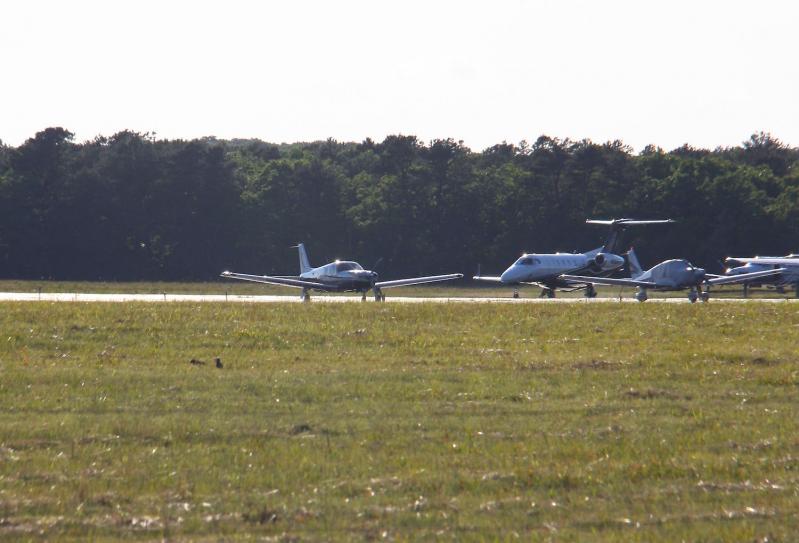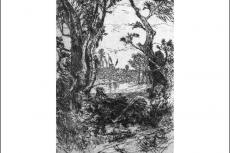After another barrage of complaints about East Hampton Airport from fed-up residents from the South Fork to Queens -- with one describing a region in "full 'Apocolypse Now' mode" because of incessant helicopter noise -- the East Hampton Town Board got a sense of what can and cannot be done with respect to redeveloping or repurposing the property should it decide to close the airport or restrict flights when Federal Aviation Administration grant assurances expire in September.
The town board has been considering the future of the facility and collecting data about it as it considers a re-imagining of the airport and its operations.
At 610 acres, the airport grounds, which include trails used by cyclists, hikers, and joggers as well as the 97-acre Maidstone Gun Club lot, comprise the largest remaining swath of land for potential redevelopment in the town.
On Tuesday, the board heard from William O'Connor, an attorney retained by the town for airport matters, and Peter Flinker and Lisa Liquori, planning consultants to the town, about environmental conditions at the airport and the planning and zoning regulations that pertain to it.
The presentation was the third on the airport in recent months, following consultants' expositions of the airport's economic impacts, operations and noise, and carbon emissions and air quality in May and last month. Discussions about a diversion study and a passenger survey, and a series of public engagement sessions, are still to come, said Mr. O'Connor.
The active area of the airport is one of the most intense land uses in the town, Mr. Flinker and Ms. Liquori told the board on Tuesday. The site, they said, includes important conservation resources including the Georgica Pond watershed, critical drinking water reserves, a unique grassland ecosystem, the town's largest area of pine barrens, and established trails and recreational open space. It is largely surrounded by recreational and protected open space within East Hampton and Southampton Towns, with dense commercial-industrial and residential development to its south.
The airport property lies entirely within the Georgica Pond watershed, Mr. Flinker said, with precipitation falling within its boundaries soaking into the ground or making its way to the ecologically stressed pond.
In addition to water quality, Ms. Liquori said, conservation values of the airport include drinking water supplies, grassland vegetation, pine barrens, and passive recreation and open space.
East Hampton has limited reserves of potable groundwater, she said, "derived from beneath the land we live on." Potable water in the town is limited to the Upper Glacial and Magothy aquifers, the latter limited to the western portion of the town. The airport is situated over the deepest part of both of them, and the uses on the property affect the quality of the water below it, as the aquifers are recharged from both precipitation and runoff.
The Suffolk County Water Authority has proposed a two-million-gallon storage tank for its well field in the immediate vicinity of the airport, part of an interconnected system that supplies water to all of the town. This, Ms. Liquori said, will increase the water authority's reliance on that well field.
Mr. Flinker described a complex and globally rare ecosystem that has developed since the land was cleared in 1937, activity that "accidentally resulted in a more diverse plant community" with 77 species that are endangered, threatened, or of concern. It is a refuge for native plants that suffer from disturbances and competition from nonnative species in other places, he said. If it is not retained, it will revert to a forest.
Vegetation surrounding the runways includes Atlantic coastal pine barrens grasslands, itself surrounded by the largest intact block of pine barrens in the town.
Approximately 97 acres are zoned for parks and conservation, the remaining 513 acres having the commercial-industrial designation. A water recharge overlay district lies north of the grounds' industrial park. This, Ms. Liquori said, requires any subdivisions to have an open space plan for maximum preservation, and restricts clearing to 50 percent of lots and building coverage to 30 percent.
There are wetlands and wetland setbacks at Daniel's Hole, and 47 acres are subject to restrictions based on their inclusion on the New York State Department of Environmental Conservation's Registry of Inactive Hazardous Waste Disposal Sites, commonly called Superfund sites.
The airport property is designated a State special groundwater protection area, given the dangers that contamination of the aquifer would pose to health and economic development. The Long Island Comprehensive Special Groundwater Protection Area Plan recommends, for the entirety of the airport area, that the county and town continue to acquire and preserve woodlands, use clustering and transfer of development rights to protect large swaths of open space, rezone land to residential use with five-acre zoning, and limit commercial and industrial uses to those areas already committed to them.
The property is also designated a critical environmental area, requiring decision makers to specifically evaluate how a potential project would affect groundwater, human health, wildlife habitat, forest and vegetation, open space, and areas of important aesthetic or scenic quality, among other criteria.
The airport property is also designated a Suffolk pine barrens area and a town priority drinking water protection area.
The comprehensive plan designated two areas within the airport holdings, totaling 204 acres, as priority drinking water protection areas and recommends them for permanent conservation.
Before the presentation, the board, with Councilwoman and Deputy Supervisor Kathee Burke-Gonzalez presiding in the absence of Supervisor Peter Van Scoyoc, heard from more than 10 people, in person or by phone. Most were concerned about noise pollution, but there was some support for maintaining the airport as is. One resident referred to the F.A.A.'s recent special authorization for an unleaded fuel for small aircraft, which she called "a big step forward in the aviation community's effort to go green."
Michael Kushner of Sag Harbor said that he is "a victim of the ear-splitting sound of oversized private jets" and called helicopter noise "a particularly difficult kind of noise" as the aircraft approaches. "All conversation in the home must cease," said Mr. Kushner, who likened the conditions to "Apocalypse Now," and said "the dogs start barking uncontrollably. . . . Now, imagine that 30 times a day, at all hours," even in the middle of the night.
Those affected are suffering damage to their mental and physical health, he said. "The amount of traffic is entirely out of character with the town. Please close the airport."
Albert Mirashi, of the Whitestone neighborhood in northern Queens, told the board that the North Shore helicopter route is directly over his house. Traffic to East Hampton Airport "affects so many communities," he said, from New York City "all the way to your airport."
"Are you guys aware I cannot go outdoors, enjoy any activity in my backyard?" he asked. Even in his basement, with the dehumidifier and television on, he hears helicopters, he said. "If you think this is normal, I have no idea what to say." He is considering moving from the house he grew up in, he said. Close the airport permanently, he said, "because we have suffered way too much for way too long."




